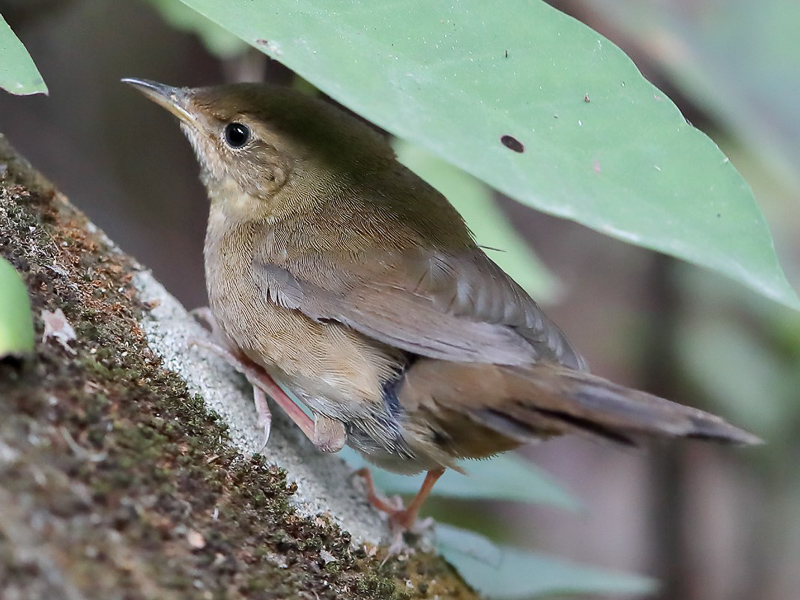Brown Bush Warbler Locustella luteoventris 棕褐短翅鶯
Category I. Rare winter visitor to dense grassy areas.
IDENTIFICATION

Jan. 2021, Michelle and Peter Wong.
13 cm. Short wings, graduated tail, flat crown and short bill. Rather uniform warm brown upperparts, uniform face with narrow whitish orbital ring and faint supercilium that generally does not extend behind the eye, unmarked throat, paler brown wash to chest and plain undertail coverts. The bill has dark upper mandible and pale lower mandible even in breeding season. When seen well, compared to Russet Bush Warbler it has paler and warmer upperparts, slightly less obvious supercilium, plain undertail coverts and lacks a greyish tone to chest (Kennerley and Leader 1993, Kennerley and Leader 2010).
VOCALISATIONS
Of the grassland or grassland/shrubland species with a similar call, the typical utterance of Brown Bush Warbler is the lowest in pitch, with the exception of Manchurian Bush Warbler. The latter, however, will generally utter a longer duration double- or even triple-note call. The call of Russet Bush Warbler is similar but higher in pitch. Brown Bush Warbler also has a rather distinctive buzzing croak that is also deeper in pitch and less harsh than Russet Bush Warbler. Both calls can be heard in this recording.
The song is insect-like, a repeated, stereotyped slow reeling. In HK the phrases heard are usually shorter than this bird on the breeding grounds.
DISTRIBUTION & HABITAT PREFERENCE
All records until 2007 were from Sha Lo Tung, as birds were known to frequent the tall dense grass that was present there in abundance. The first record away from there was of a bird trapped in the reed marsh at Mai Po NR. Since then, it has been recorded in dense, tall grass at Robin’s Nest (where single birds have been heard in song in April), Lam Tsuen and on Lantau. Further birds were trapped at Mai Po NR and HK Wetland Park.
OCCURRENCE
Rare winter visitor: occasionally birds are recorded in song in early spring, though whether these are migrants or wintering birds is unclear. Extreme dates are 26 October 1995 and 21 April 2020.
It has been recorded in approximately 50% of winter periods, but the frequency is increasing due to increased observer activity and familiarity with its habits and song. The highest count is of three at Sha Lo Tung in March 2006 and Robin’s Nest in December 2020.
BEHAVIOUR, FORAGING & DIET
Extremely difficult to see well as it is very skulking. Creeps along ground or around the base of plants or bushes. Heard giving low-intensity song from 9 March to 21 April.
RANGE & SYSTEMATICS
Monotypic. Breeds in the eastern Himalayas, west and north Myanmar into southwest, south and southeast China largely south of the Yangtze (Kennerley and Pearson 2010, Liu and Chen 2020).
CONSERVATION STATUS
IUCN: Least Concern. Population trend stable.
Kennerley, P. R. and Leader, P. J. (1993). Russet Bush Warbler and Brown Bush Warbler: two species new to Hong Kong. Hong Kong Bird Report 1992: 114-130.
Kennerley, P. and D. Pearson (2010). Reed and Bush Warblers. Christopher Helm, London.
Liu, Y. and Y. H. Chen (eds) (2020). The CNG Field Guide to the Birds of China (in Chinese). Hunan Science and Technology Publication House, Changsha.

